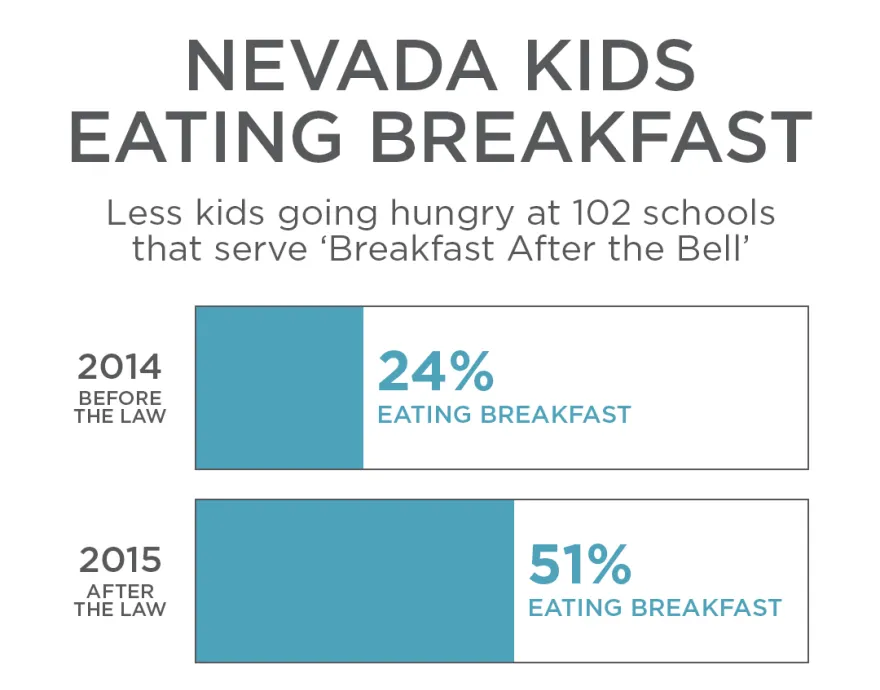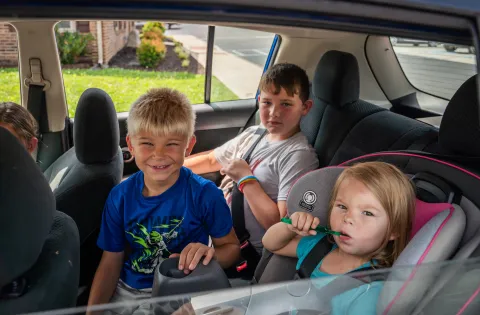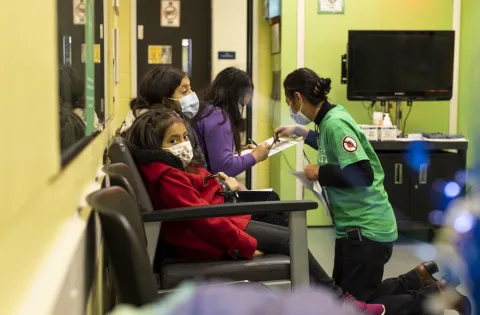In 2015, with help from No Kid Hungry, lawmakers in Nevada passed legislation requiring schools serving low-income kids* to make breakfast part of the regular school day. Here's a look at what happened:
To get the Nevada law passed, No Kid Hungry worked closely with our local partners at Three Square, a food bank serving kids and families across southern Nevada, and Kathleen Teipner Sandoval, the state’s former first lady and director of the Nevada Center for Children and Youth.
The effect on kids was dramatic, as our new report on the legislation shows. In the 102 schools that made breakfast part of the regular school day after the new law went into effect, the number of students eating breakfast more than doubled – from 24% to 51%.

When you make breakfast part of the regular school day, a lot more kids get the chance to eat.
That huge jump shows the power of such a simple change – as simple as serving school breakfast at a different time of day. Now, 109,000 kids in Nevada – many of them from low-income families, are starting their school days with a healthy meal.
We only saw this dramatic increase at 102 schools that started a 'Breakfast After the Bell' program in the wake of the new law. The roughly 400 schools that were not affected by the law saw only negligible increases in the number of students eating breakfast. (An additional 106 Nevada schools were already serving “Breakfast After the Bell” prior to the law.)
You can see the effect even more starkly in Clark County, home to Las Vegas and Henderson, Nevada’s two largest cities. Here, the rate of children eating breakfast at school jumped by an incredible 50% – from just over 10 million school breakfasts served before the law was passed to over 15 million afterwards.
“Clark County has the largest number of Nevada students who are eligible for free or reduced-price lunch, so we know these are the children who may really need that morning meal,” said Courtney Smith, the director of No Kid Hungry’s Center for Best Practices. “Many of them might otherwise simply go without.”
There are different ways to make breakfast part of the school day, depending on the needs of the school:
- Breakfast in the classroom: Breakfast is served to kids in their homeroom or first-period classes as the school day begins
- Grab-and-go: Healthy, portable foods are served from carts or kiosks
- Second chance breakfast: Breakfast is served after first period classes, either from kiosks or in the cafeteria
Research shows that adopting one of these methods increases the number of kids eating school breakfast, which can have dramatic effects on their performance in school.
There was more good news from Nevada. Prior to rolling out the new program, the state Department of Agriculture estimated that for every $1 of grant funds provided by Nevada to support local school districts serving breakfast after the bell, federal meal reimbursements would increase by $3. (Schools everywhere are reimbursed by the federal government for the cost of free or reduced-price meals.) But the true return was significantly higher, averaging $8 for every dollar invested by the state. That helps No Kid Hungry make the case to elected officials elsewhere that feeding kids is not only the right thing to do, it is a sound investment and a strategic use of funds.
You can find our complete case study here.
* Schools where at least 70 percent of student are eligible for free or reduced-price lunch.


